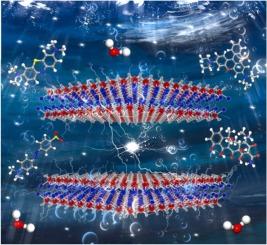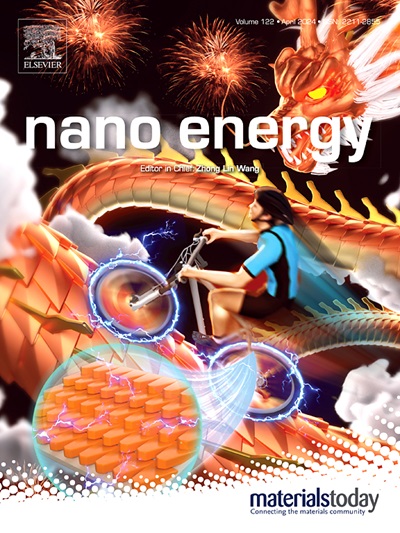利用具有卓越吸附能力的 BiOI 纳米流体进行多模式能量采集,实现高效压电光催化废水处理
IF 16.8
1区 材料科学
Q1 CHEMISTRY, PHYSICAL
引用次数: 0
摘要
压电光催化是一种利用太阳能和机械能进行载流子分离和迁移的多模式催化过程。目前,这一技术在 BiOI 材料上的研究还不多。如何将光能和机械能与 BiOI 材料有效耦合,以实现高压电光催化效率并减少催化剂对水的二次污染,仍是一项挑战。在这项工作中,通过溶热法合成的 BiOI 纳米花具有显著的比表面积,并表现出光催化、压电催化和压电光催化特性。BiOI 纳米流体对有机污染物具有良好的压光催化降解效率,最高一阶动力学系数为 0.4549 min-1。此外,还开发了一种复合多孔泡沫催化剂,以加强环境保护和回收利用。该纳米复合材料不仅保证了特定的催化降解效率,还显著提高了催化剂的回收率,防止了水的二次污染。这项研究为今后的压电催化研究提供了新的参考和动力,同时也为通过多模式能量收集进行废水处理提供了一种可行的环保方法。本文章由计算机程序翻译,如有差异,请以英文原文为准。

Multimodal energy harvesting utilizing BiOI nanoflowers with superior adsorption capabilities for efficient piezo-photocatalytic wastewater treatment
Piezo-photocatalysis is a multimodal catalytic process harnesses both solar and mechanical energy for carrier separation and migration. At present, this technology has not been studied much on BiOI materials. Effective coupling of light and mechanical energy with BiOI materials to achieve high piezo-photocatalytic efficiency and reduce secondary pollution of water by catalysts remains a challenge. In this work, BiOI nanoflowers synthesized via solvothermal method, provide a remarkable surface area and exhibit photocatalysis, piezocatalysis and piezo-photocatalysis properties. The BiOI nanoflowers have good piezo-photocatalytic degradation efficiency for organic pollutants, with the highest first-order kinetic coefficient of 0.4549 min−1. Furthermore, a composite porous foam catalyst was developed for enhanced environmental protection and recycling. The nanocomposite not only guarantees a specific catalytic degradation efficiency but also significantly enhances catalyst recovery and prevents secondary water pollution. This study provides a new reference and impetus for future research on piezo-photocatalysis, and also offers a viable and environmentally friendly approach for wastewater treatment through multi-mode energy harvesting.
求助全文
通过发布文献求助,成功后即可免费获取论文全文。
去求助
来源期刊

Nano Energy
CHEMISTRY, PHYSICAL-NANOSCIENCE & NANOTECHNOLOGY
CiteScore
30.30
自引率
7.40%
发文量
1207
审稿时长
23 days
期刊介绍:
Nano Energy is a multidisciplinary, rapid-publication forum of original peer-reviewed contributions on the science and engineering of nanomaterials and nanodevices used in all forms of energy harvesting, conversion, storage, utilization and policy. Through its mixture of articles, reviews, communications, research news, and information on key developments, Nano Energy provides a comprehensive coverage of this exciting and dynamic field which joins nanoscience and nanotechnology with energy science. The journal is relevant to all those who are interested in nanomaterials solutions to the energy problem.
Nano Energy publishes original experimental and theoretical research on all aspects of energy-related research which utilizes nanomaterials and nanotechnology. Manuscripts of four types are considered: review articles which inform readers of the latest research and advances in energy science; rapid communications which feature exciting research breakthroughs in the field; full-length articles which report comprehensive research developments; and news and opinions which comment on topical issues or express views on the developments in related fields.
 求助内容:
求助内容: 应助结果提醒方式:
应助结果提醒方式:


